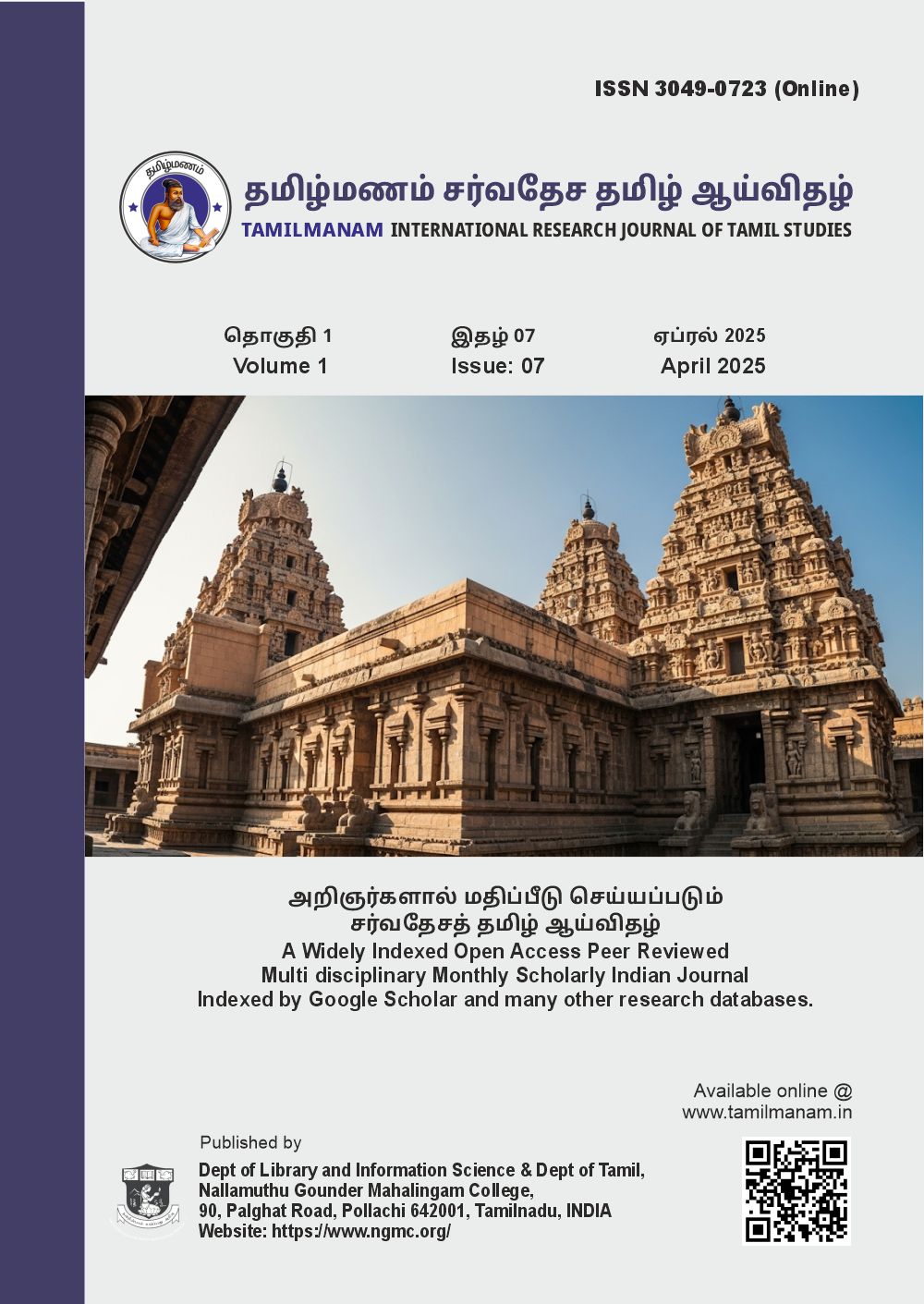The Evolving Nature of Worship
இறைவழிபாட்டில் வளர்ச்சி நிலை
DOI:
https://doi.org/10.63300/tmv0107ap25Keywords:
Worship, Mullaipattu, Thirumurugaatrupadai, Evolving WorshipAbstract
Did the ancient Tamils have faith in deities? Did they worship them? Were the deities they worshipped and revered deities native to Tamil Nadu? These are natural questions that arise. To find answers to such questions, it is necessary to deeply explore Tamil literature. The Tamil people worshipped the gods they believed in according to their customs and traditions. It is true that worship began in connection with nature. This reflects the lifestyle of the people of that time and their close connection with nature. In the early stages, humans recognized the power and grandeur of nature and began to worship it. They worshiped natural elements such as the sun, wind, rain, and fire as deities. This was a sign of fear and respect for nature. Many references to such nature worship can be found in Sangam literature. For example, in "Mullaipattu," it is mentioned that the rain god was worshipped. The people of that time worshiped and praised nature for the prosperity of agriculture and their lives. In devotional literature like "Thirumurugaatrupadai," Lord Muruga is depicted as a part of nature itself. Mountains and forests are mentioned in connection with him. Furthermore, ancient Tamils worshiped those who died valiantly by erecting memorial stones (Nadukal). This was a way of honoring heroism and sacrifice. These memorial stones were erected in memory of the deceased heroes, and offerings were made to them. This worship emphasized the importance of valor in society. Thus, the ancient Tamils' worship centered on nature and heroism. It was intertwined with their lives and culture. Over time, these forms of worship gradually evolved, leading to the emergence of various deities
Downloads
Downloads
Published
Issue
Section
License
Copyright (c) 2025 Dr J.JESI (Author)

This work is licensed under a Creative Commons Attribution 4.0 International License.
Our journal adopts CC BY License Creative Commons Attribution 4.0 International License http://Creativecommons.org//license/by/4.0/ . It allows using, reusing, distributing and reproducing of the original work with proper citation.






